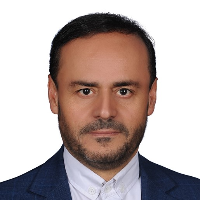Determining Workload Indicator and Measure the Number of Human Capital in the Health System: A Narrative Review Study
Considering the wide range of services of the health system, proper training and distribution of human capital is highly important. It is worth mentioning that any imbalance in the distribution of human resources will result in a shortage or over-recruitment of medical staff. The purpose of this review article is to analyze the workload Indicator Staffing Need and determine the number of human capital required based on the standard of the World Health Organization.
This study is a Narrative review research. The statistical population includes available documents regarding the determination of the workload Indicator Staffing Need from January 2003 to April 2023. The sampling method was determined according to the documents related to the workload Indicator Staffing Need. The validity of the present study was implemented by searching in authoritative Persian and English-language scientific databases, including Google Scholar, IranMedex and Magiran, Scopus, and PubMed. Also, for reliability, a comparative study of documents was used. The search strategy included Human resource planning, Wisn, "Workload" and "Workload Indicator staff need" keywords and their Persian equivalent.
The classification and review of documents related to the subject of the study were examined in the three continents of Asia, Europe, and Africa. The findings indicated that the key success factor in the accurate estimation of the demand and supply of human resources in the health system is correct policy-making at headquarters levels and choosing a timely scientific-executive approach based on the precise definition of job processes. According to the documents and articles and comparison of common factors, and also concerning the World Health Organization Workload Indicator Staffing Need findings of the study were divided into 48 managerial components and 13 technical components, and then the data were.
Many medical sciences universities in Iran do not use a specific model and indicator to estimate the number and calculate the workload of their employees. It can be said that most universities of medical sciences, instead of using a systematic model, still use old and mental models to deal with high workload and estimate the required number of employees. So, it is highly important to pay attention to the implementation of the two-dimensional managerial-policy-making model at the level of senior managers and perform scientific-executive measures according to the conditions and organizational culture.
- حق عضویت دریافتی صرف حمایت از نشریات عضو و نگهداری، تکمیل و توسعه مگیران میشود.
- پرداخت حق اشتراک و دانلود مقالات اجازه بازنشر آن در سایر رسانههای چاپی و دیجیتال را به کاربر نمیدهد.


